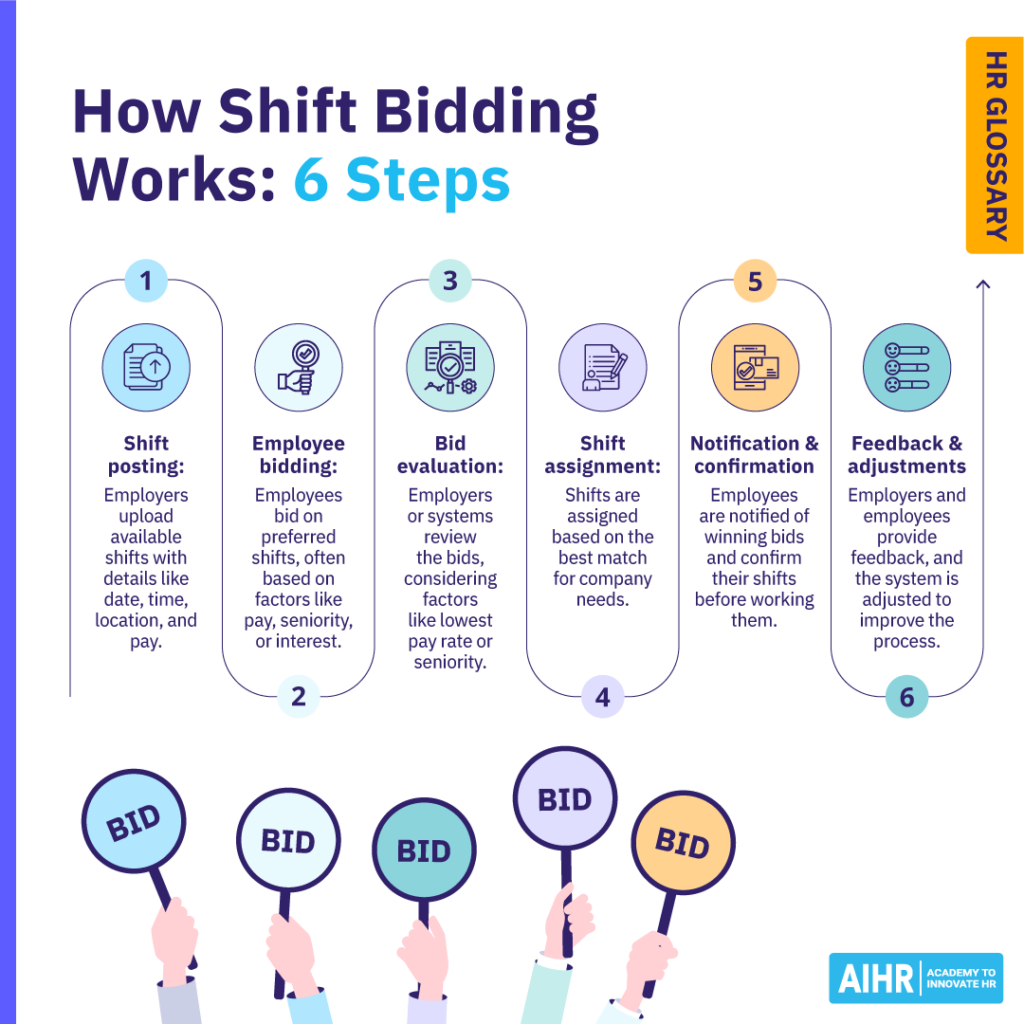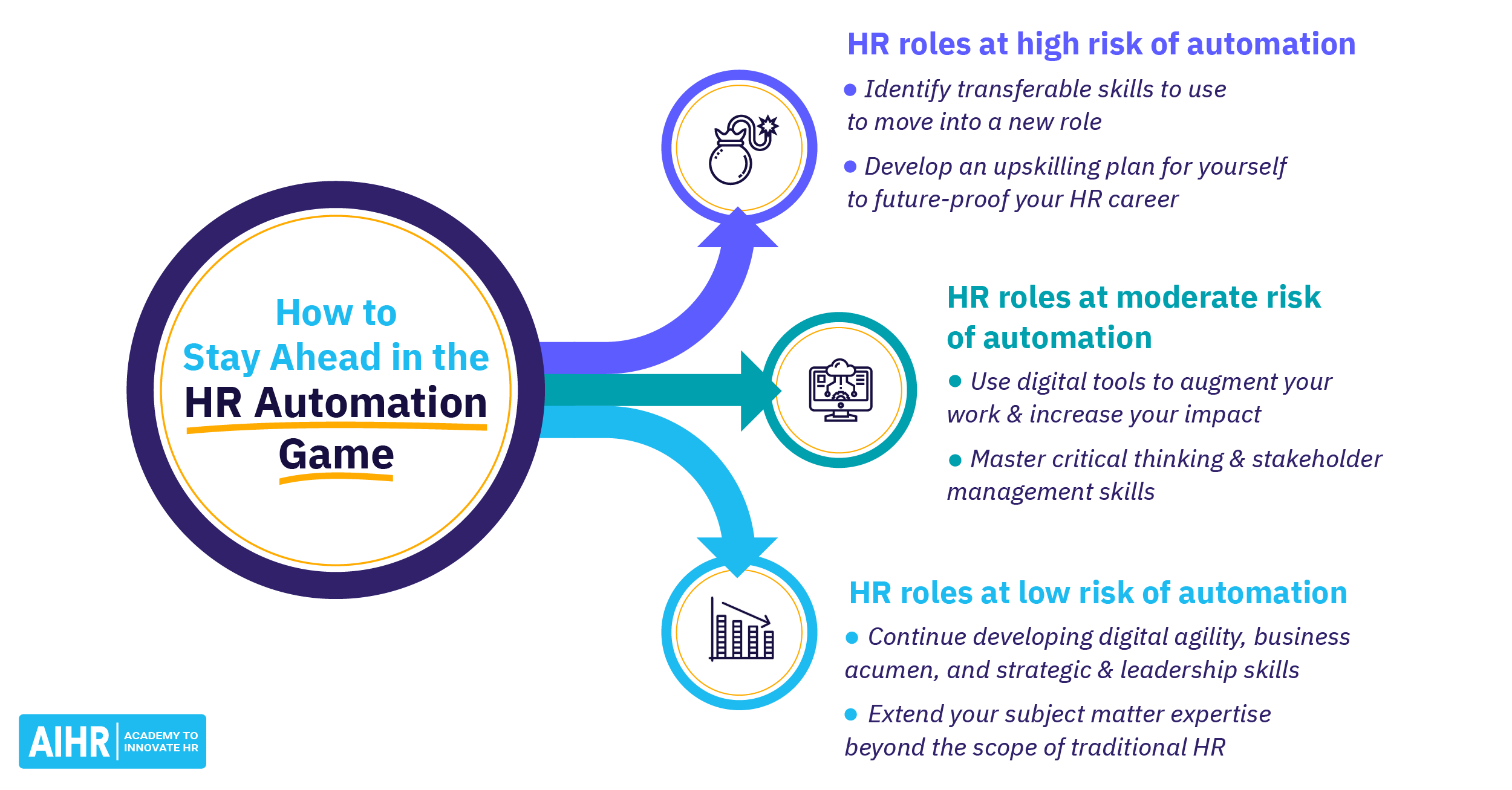Shift Bidding
What is shift bidding?
Shift bidding is a workforce management process that lets employees bid on available work shifts, typically through an online platform.
Companies use this approach to let workers select shifts that fit their schedules. The bidding process can factor in seniority, performance, or even willingness to work for lower pay, adding a competitive element to shift selection.
Shift bidding gives employees more control over their work hours but can also create a more flexible scheduling process for employers, especially in industries like healthcare, retail, or manufacturing.
How does shift bidding work?
Shift bidding typically occurs through a digital platform where employees can view available shifts and place bids to work those shifts. Here is how the process generally works:
- Step 1: Shift posting: The employer uploads a list of open shifts that need to be filled. These shifts usually come with details like date, time, location, and sometimes, pay rate.
- Step 2: Employee bidding: Employees then have the opportunity to bid on the shifts they prefer. The bidding criteria can vary by company — some allow workers to bid based on pay, others on seniority, and in some cases, employees can bid just by expressing interest.
- Step 3: Bid evaluation: Once employees have placed their bids, the employer or an automated system reviews them based on the chosen criteria (like lowest bid pay rate, seniority, or job performance). For example, if a company allows bidding based on pay rates, an employee willing to work for lower pay might get the shift.
- Step 4: Shift assignment: After the review, shifts are assigned based on the best match, whether that’s the lowest bid, seniority, or other company-specific priorities.
- Step 5: Notification and confirmation: Employees are notified of whether they’ve won their bids and given a chance to confirm their assigned shifts. Once confirmed, they are expected to work the shift as they would according to a traditional schedule.
- Step 6: Feedback and adjustments: After the shift bidding process is over, both employers and employees may provide feedback, and adjustments can be made for future bidding rounds to improve overall fairness and satisfaction.

5 types of shift bidding software
Here are five examples of shift bidding software that organizations can use to implement and manage this process:
1. UKG Dimensions (previously Kronos Workforce Scheduler)
UKG Dimensions (known as Kronos Workforce Scheduler prior to its rebranding) is a workforce management solution designed to help businesses manage employee scheduling, time tracking, and attendance. Some of its key features are:
- Flexible shift bidding based on seniority, skills, or availability
- Integration with time and attendance, payroll, and HR systems
- Mobile access for employees to manage their schedules
- Compliance with labor laws and regulations.
2. Shiftboard
Shiftboard is a workforce scheduling and management platform focused on helping organizations efficiently schedule shifts for hourly workers. Some of its core attributes are:
- Real-time shift bidding with automated notifications
- Customizable bidding rules based on organizational needs
- Integration with payroll and HR systems
- Mobile-friendly interface for on-the-go access.
3. When I Work
When I Work is an employee scheduling and time-tracking software designed for businesses with hourly workers. Its standout features are:
- Easy-to-use shift bidding and swapping features
- Employee self-service for bidding on and trading shifts
- Automated reminders and notifications
- Integration with payroll and communication tools.
4. Deputy
Deputy is a workforce management software designed to simplify employee scheduling, time tracking, and task management, particularly for shift-based businesses in industries like retail, hospitality, healthcare, and manufacturing. Some of its notable features are:
- Automated shift bidding based on employee preferences
- Compliance with labor laws and awards
- Real-time communication between managers and employees
- Integration with payroll, POS, and HR systems.
5. Workforce
Workforce is a cloud-based workforce management software that focuses on employee scheduling, time and attendance tracking, and labor cost management. Its key characteristics are:
- Advanced shift bidding options with rule-based assignments
- Employee empowerment through self-service bidding
- Comprehensive compliance and reporting tools
- Scalable solutions for large organizations.
Pros and cons of shift bidding
Pros
- Greater control over schedules: Employees have more control over their schedules, allowing them to balance work and personal life better.
- Optimized shift coverage: The bidding process ensures shifts are filled by employees most willing or suited to work them, potentially improving productivity.
- Increased employee satisfaction: Employees feel more empowered and valued when they have a say in their work schedule.
- Better workforce management: Employers can align shift coverage with business needs, minimizing overstaffing or understaffing issues.
Cons
- Troublesome initial setup: Setting up the platform, configuring rules for the process, and training staff to use the new system can be time-consuming and complex.
- Undesirable shifts: Less desirable shifts, such as night or weekends, may consistently go unfilled or be left for the least senior employees, potentially leading to dissatisfaction.
- Perceptions of favoritism or unfairness: If not managed transparently, the bidding process could lead to employers appearing biased. They must ensure the process is open and fair, with clear rules and criteria for shift allocation.
- System dependency: The organization will depend on the shift bidding system, requiring ongoing maintenance and updates that could be cumbersome or costly.
Shift bidding vs. shift swapping
Purpose
Proactively assign shifts before the schedule is set
Reactively adjust shifts after the schedule is set
Timing
Happens during the scheduling phase
Happens after the schedule is published
Criteria
Based on factors like seniority, skills, or availability
Based on mutual agreement between employees
Platform
Typically done through a bidding system or software
Can be done manually or via scheduling software
Management involvement
High – management sets rules and oversees bidding
Lower – usually minimal involvement unless approval is needed
Usage
Ideal for creating fair schedules with competition
Ideal for last-minute changes or personal needs
In summary, shift bidding is a proactive method to assign shifts, while shift swapping is a more flexible, post-scheduling adjustment tool.
Who can use shift bidding?
Shift bidding is particularly useful in industries with variable or around-the-clock scheduling needs. Some examples include:
- Hospitals and healthcare facilities: Nurses, doctors, and healthcare support staff often use it to manage complex schedules.
- Customer support teams: Call centers and customer service departments use this method to cover 24/7 operations.
- Manufacturing plants: Workers in production lines can bid on shifts that match their skills and availability.
- Retail stores: Employees can bid on shifts during peak shopping periods or special events.
- Hospitality industry: Hotels and restaurants may use this method to ensure adequate coverage during peak periods.
HR tip
To ensure a more satisfied workforce, analyze data from previous bidding rounds to identify patterns and make informed adjustments. For example, if certain shifts consistently remain unfilled, consider changing the shift timing, offering incentives, or rotating assignments to ensure fair distribution and adequate coverage.
Implementing shift bidding: 8 best practices for HR
Here are some best practices for implementing and maintaining shift bidding:
- Set clear criteria: Define the rules for bidding, such as seniority, skills, or performance, so employees understand how shifts are assigned.
- Use an intuitive platform: Choose user-friendly software to streamline the bidding process and make it easy for employees to participate.
- Prioritize employee’s preferences: When possible, allow employees to indicate their preferred shifts. This can boost morale and job satisfaction.
- Set minimum and maximum limits: To prevent over- or under-scheduling, establish limits on the number of shifts employees can bid on or win each period.
- Ensure fairness: Monitor the process to avoid favoritism in the workplace and ensure equal opportunities for all eligible employees.
- Offer training: Provide clear instructions and training for employees on how to use the bidding platform and understand the process.
- Incorporate flexibility: Build in options for shift swapping or last-minute changes to accommodate unforeseen circumstances like personal emergencies.
- Create a backup plan: Have a plan in place for shifts that remain unfilled after bidding, such as assigning based on availability or rotating duties.









